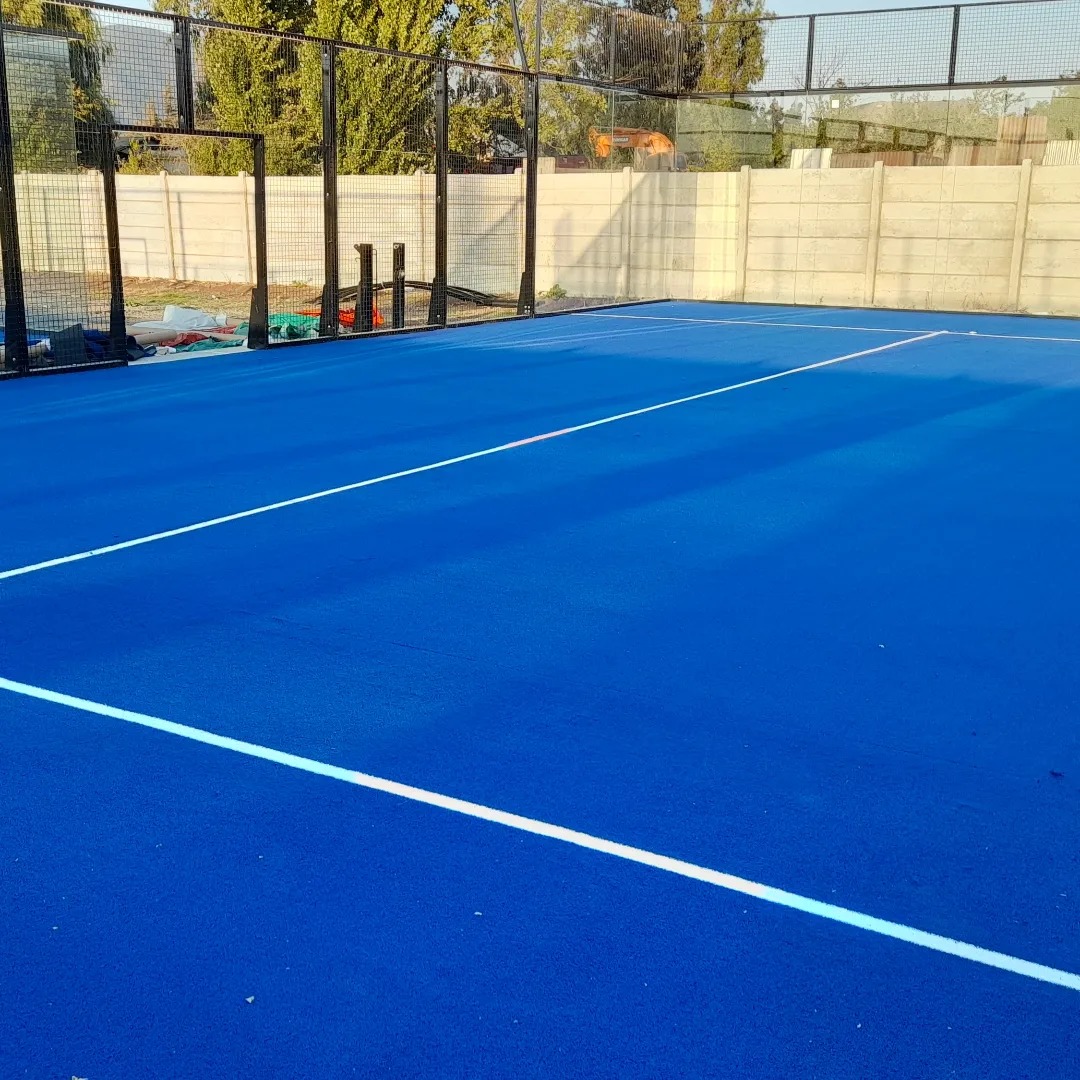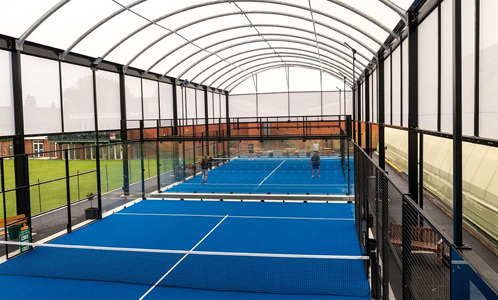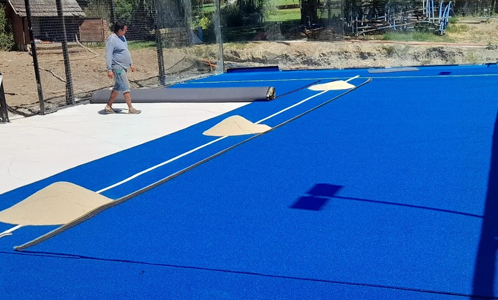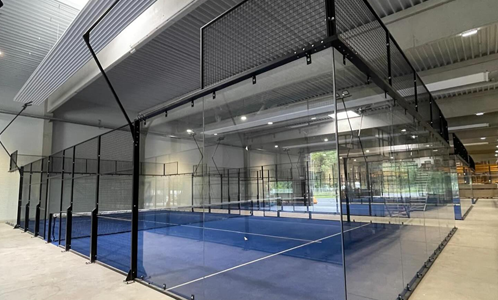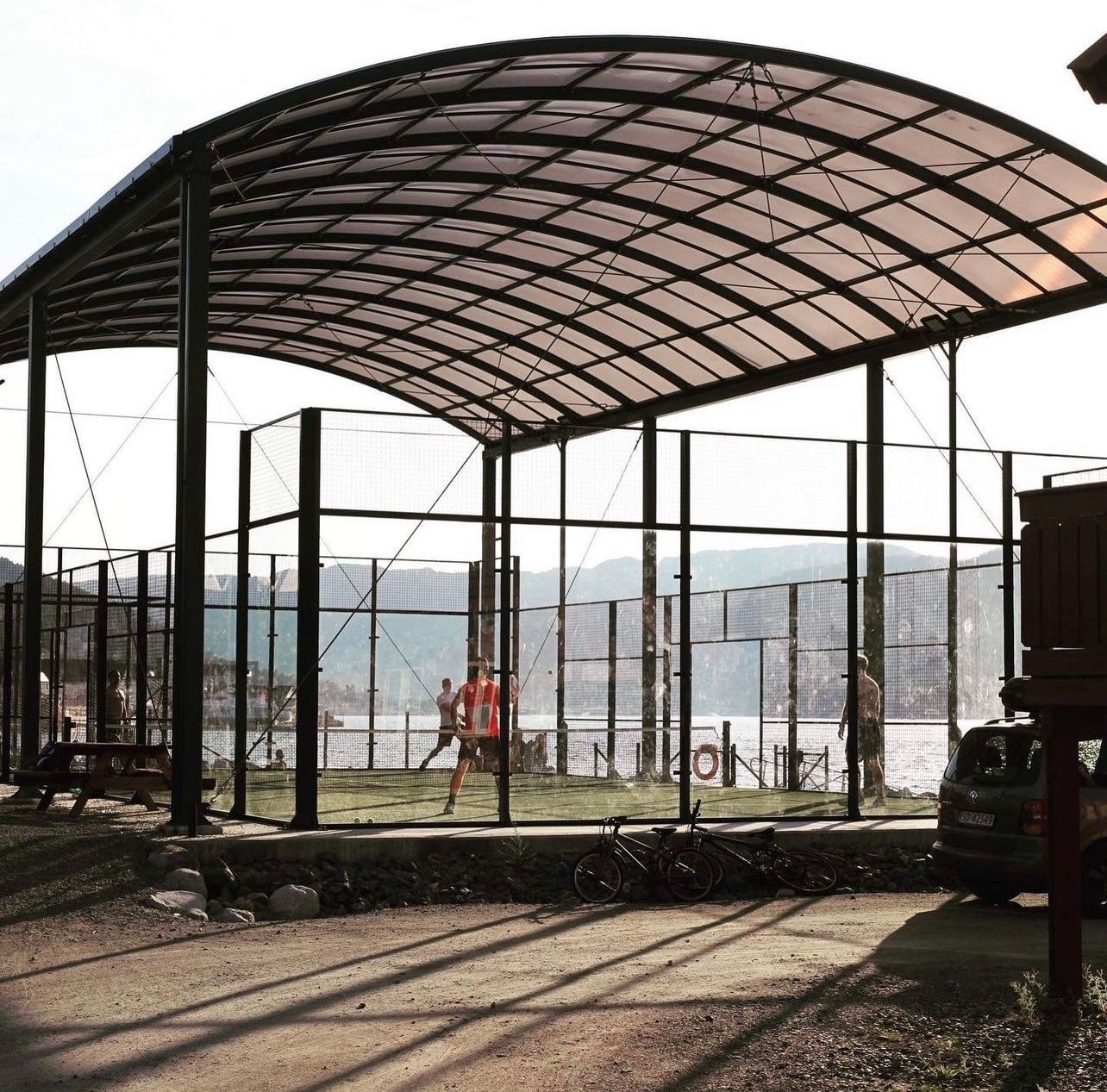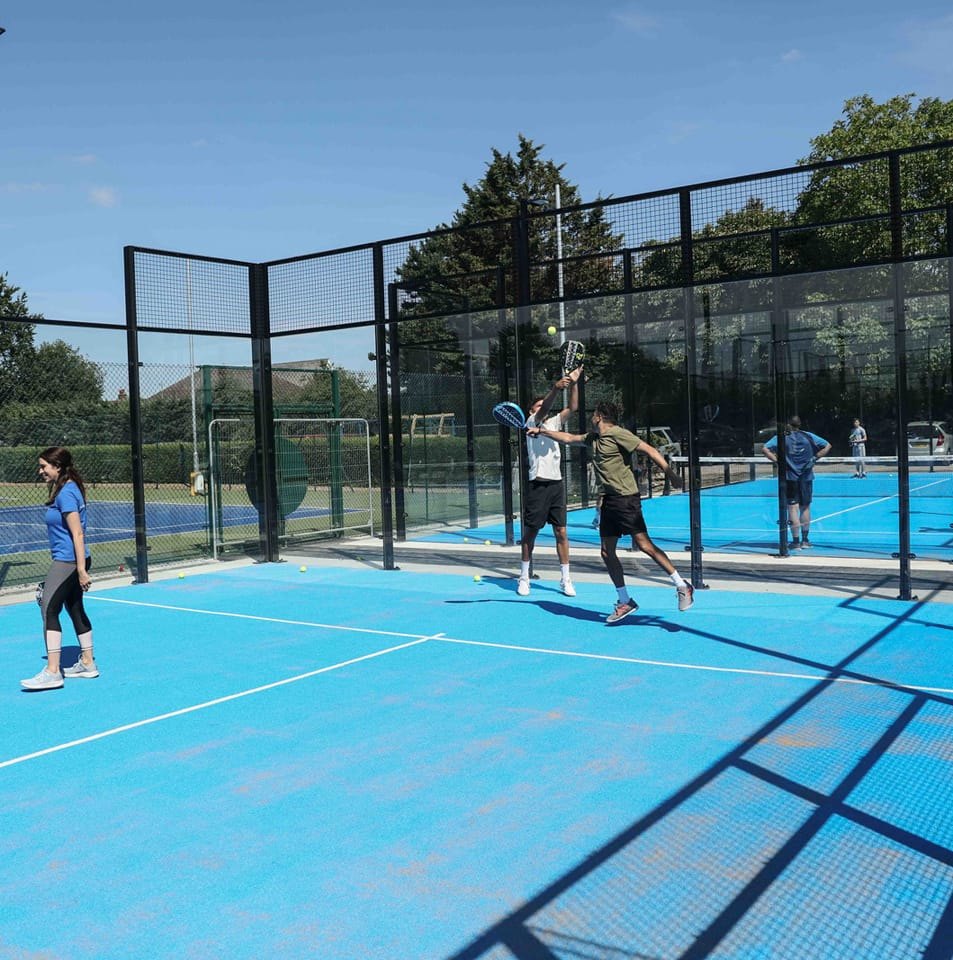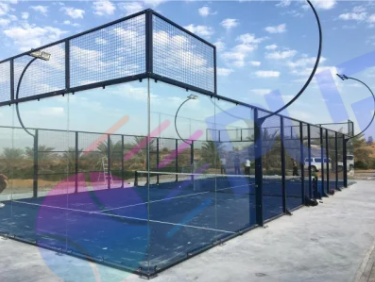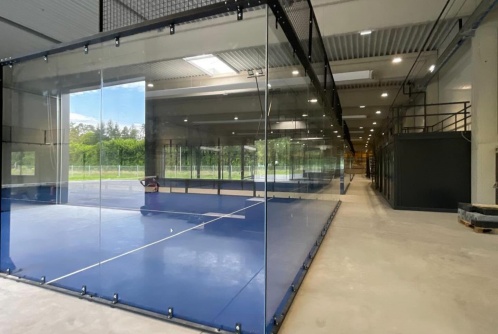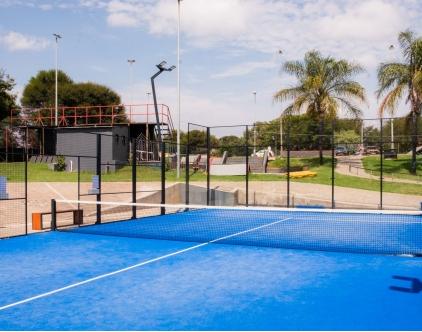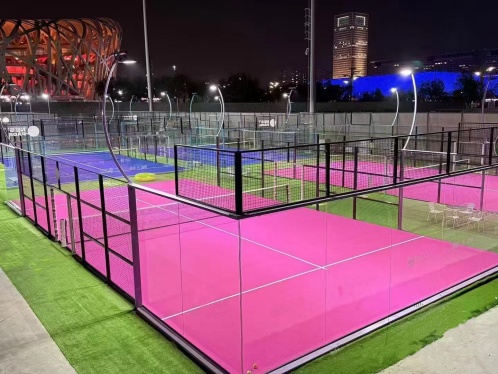The wear and tear of silica sand is gradual but inevitable and depends on several factors. Here are the most common
signs that silica sand needs to be replaced.
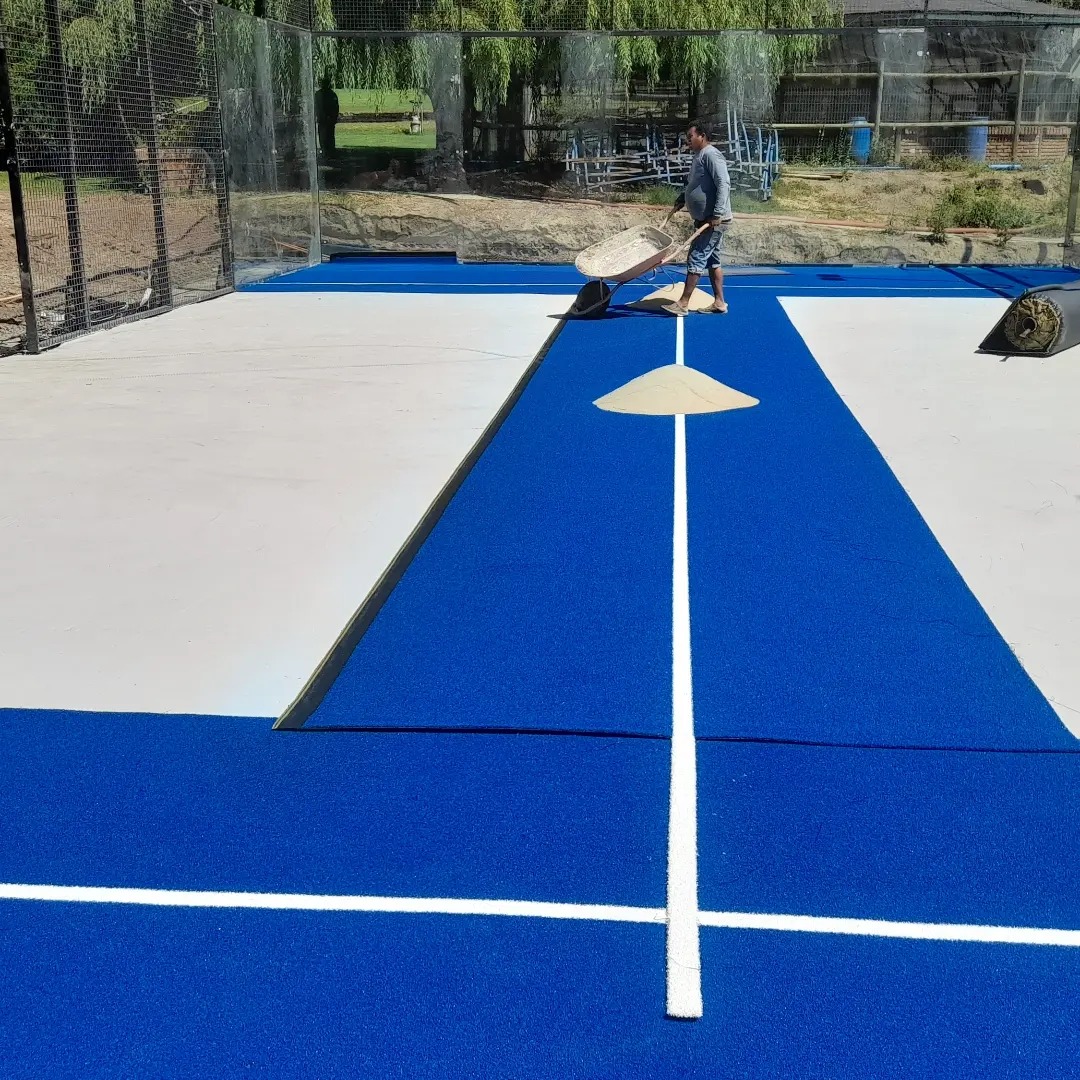
Irregular ball bounce:
Silica sand has a direct impact on ball behaviour. If you notice that it no longer bounces evenly, especially in different
areas of the court, this can be a clear sign of sand compaction or displacement.
Uneven wear on the turf surface: If the fibres begin to slant or appear 'bald’, it is likely that the sand is no longer distributing properly.
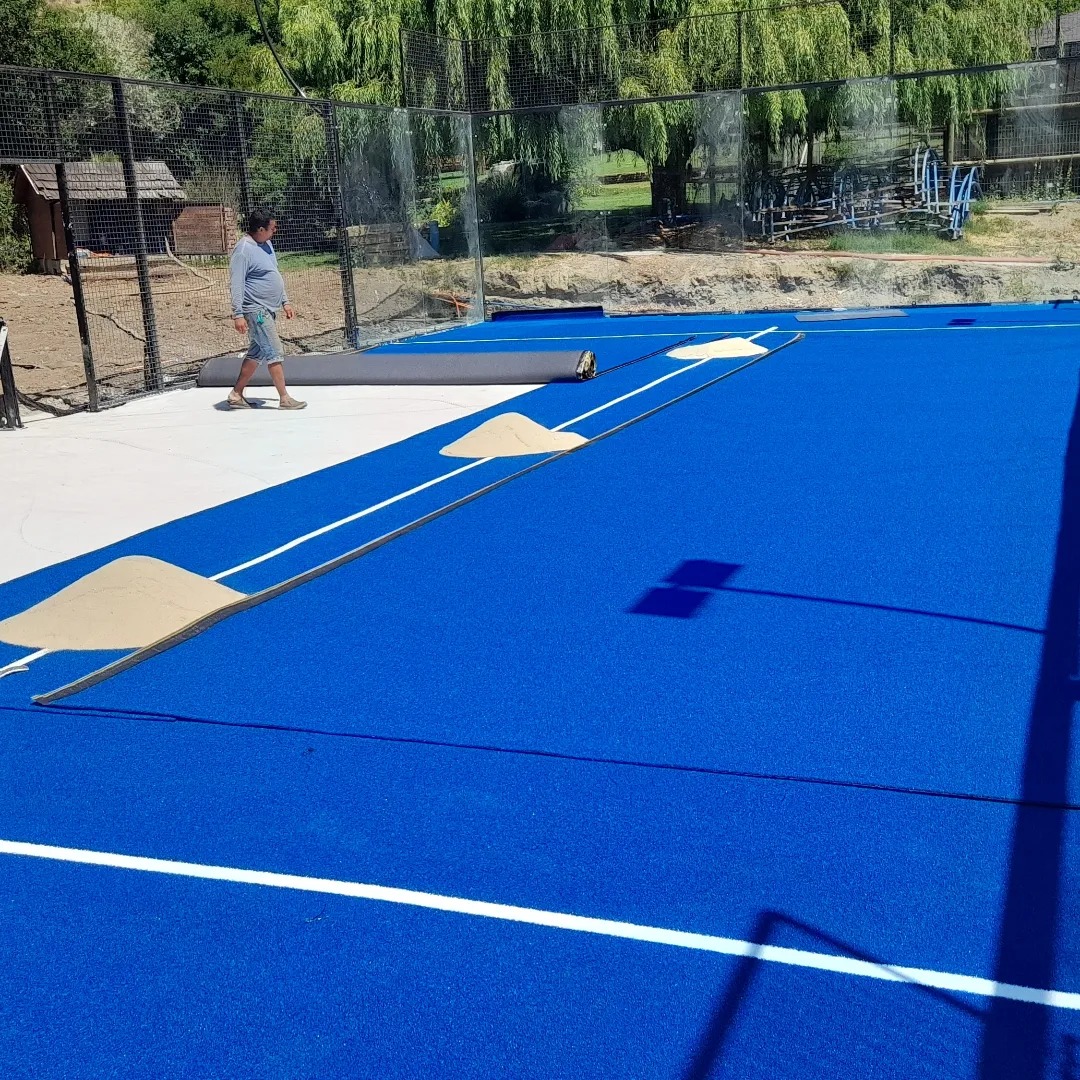
Difficult traction for players:
Silica sand provides traction on the court, allowing players to move safely. When sand becomes compacted, the
ground can become slippery or too hard, increasing the risk of injury.
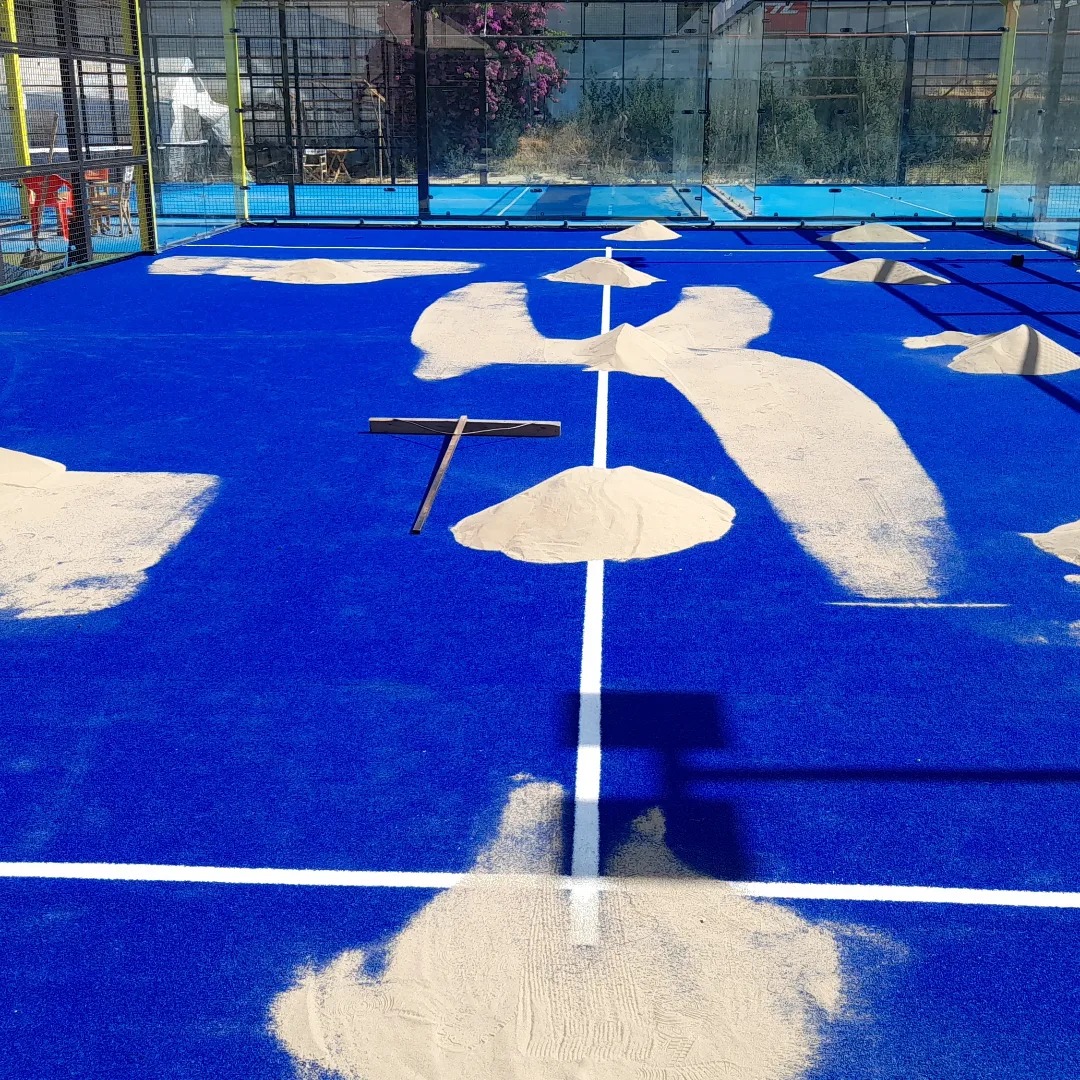
Excessive compaction: Over time, it can build up in certain areas and become compacted, reducing the flexibility and cushioning of the artificial turf.
This is noticeable when walking on the court, with increased hardness underfoot.
